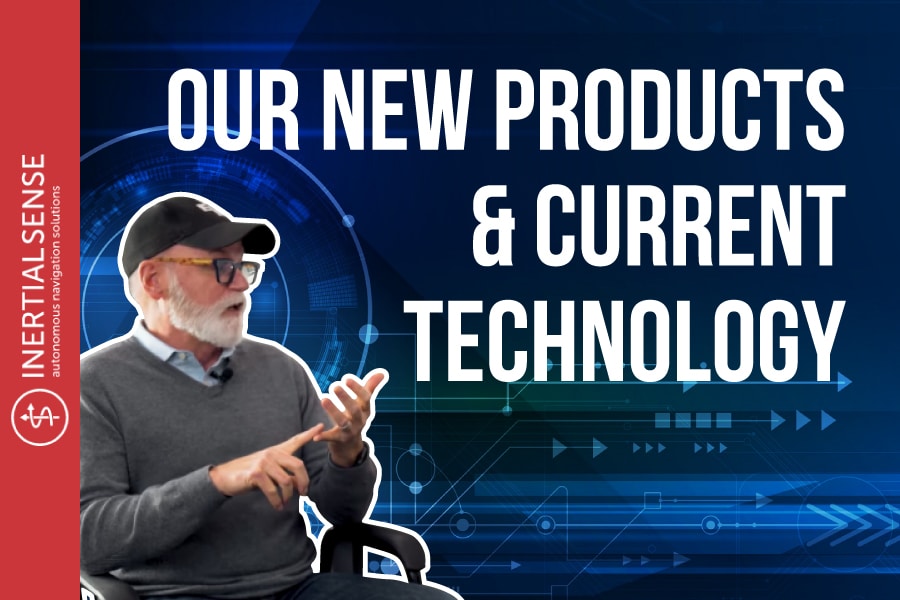
Our New Products & Current Technology
Technology is a growing industry and shows no signs of slowing down. Watch the video below as Brett and Carson discuss what new technology Inertial Sense has to offer in terms of our new products and current technology (like our IMU sensors).
Inertial Sense not only offers autonomous software, but we offer RTK and are continuously working on improving what we already have while coming up with new technologies to match and amplify your autonomous robotics.
With INS and accuracy being a focal point, Inertial Sense is here to guide you through to the next level of autonomy. Click here to get started today and speak with one of our experts to get rolling!
Learn More:
New Products & Current Technology: IMU Sensors 101 – Pros & Cons of Sensor Types
New Products & Current Technology: How to Lose Money When Buying an IMU Sensor
New Products & Current Technology: What Does Inertial Sense Have To Offer To Investors? (Part 2)
Video Transcript
My name is Brett Wright and I’m the Director of Marketing at Inertial Sense. Today I have with me our Director of Sales Carson Herbert, and we’re going to talk a little bit about IMU and inertial sensors and what the market’s like today and some of the things that Carson has seen over the time he’s been here.
So, hey Carson. So, first of all, we have a product that we’re going to release soon here and I just want you to tell me a little bit about it and some of the differences, some of the upgrades that were planned on putting into this new sensor.
Right. So, before you can really understand what we’re coming out with, we need to have an idea of what we already have, you know. We have an inertial navigation system, an INS, it’s our version 3.2. It’s got an in-run by a stability of 10 degrees per hour. You can get three-centimeter accuracy using RTK. It’s got the u-blocks made on board. We’ve got another version of it. That’s got a rugged inside of rugged enclosure and that utilizes the u-bloxes at f9p GPS. So it’s a more powerful GPS solution with it. So those are the specs of the INS three.
What we have coming out is actually just a better performance version of that. The INS three is an industrial-grade inertial navigation sensor, and the one we have coming out is actually going to be a tactical-grade inertial navigation system. Main difference is just going to be the robustness and the power and the accuracy specifications behind the module itself.
So where is that coming from? Where are some of those higher accuracy and precision specs coming from?
Right, so our INS 3.2, it has two IMUs inside of it. The INS 4.0 is going to have three, so it’s going to be triple-redundant making it more robust, more accurate. If there’s any issues inside one of the IMUs, it’s able to know which IMU is having trouble and it’s able to basically negate the data that’s coming from it giving you higher precision. In addition to that, it makes it so if the solution was to lose GPS, it would be able to go for more time without a GPS signal and still stay consistently accurate.
Yeah, and that’s huge being able to keep your position and navigation without GPS, and a lot of situations require that today.
Yeah, especially in outdoor-type applications, you know. When you’re outside and you go under a tree, okay. Underneath a tree believe it or not, is a GPS night environment because you don’t have clear skies, you know. If you go into a garage or a warehouse space for a quick second, being able to go that extra mile without GPS is very significant, especially in the different types of applications that the sensor can be used in.

